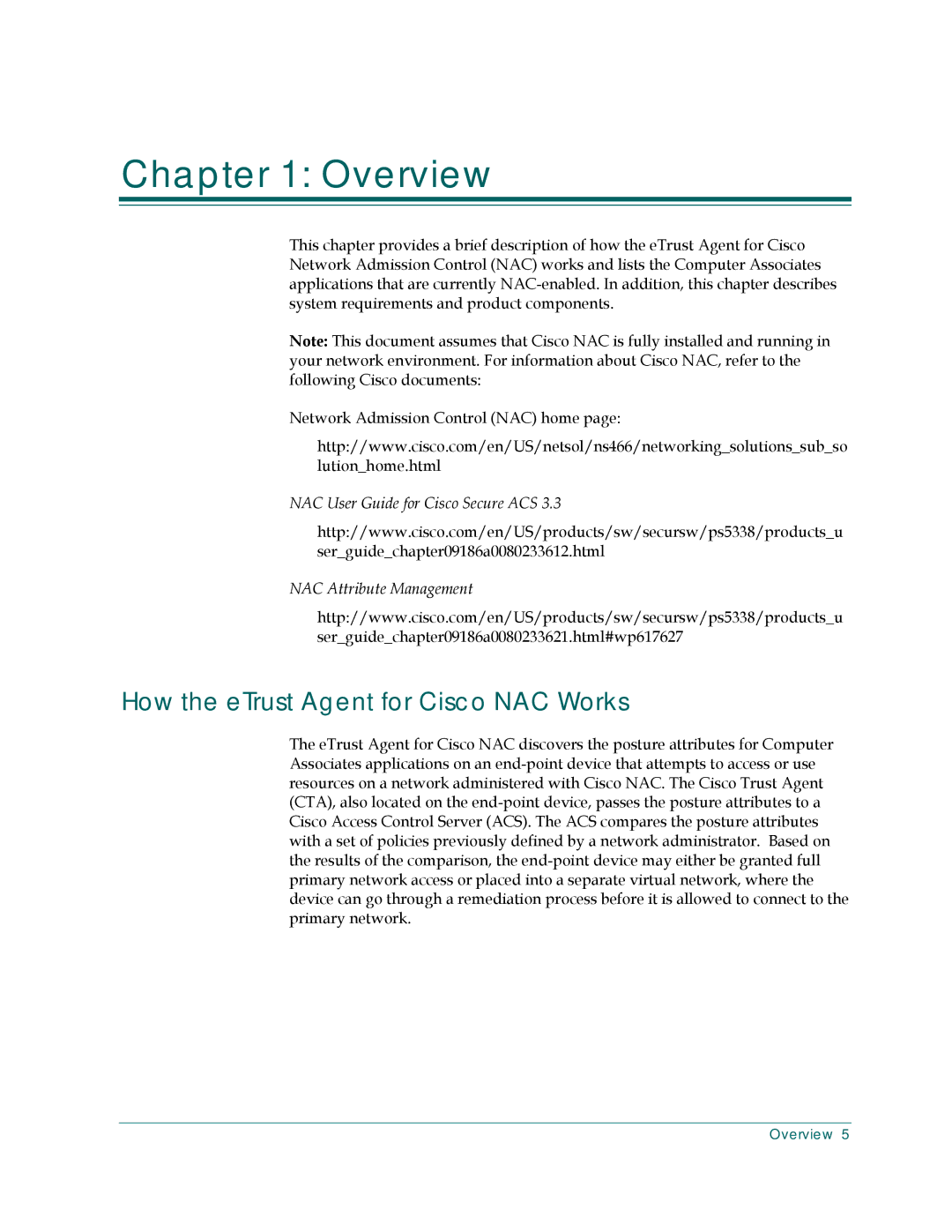
Chapter 1: Overview
This chapter provides a brief description of how the eTrust Agent for Cisco Network Admission Control (NAC) works and lists the Computer Associates applications that are currently
Note: This document assumes that Cisco NAC is fully installed and running in your network environment. For information about Cisco NAC, refer to the following Cisco documents:
Network Admission Control (NAC) home page:
http://www.cisco.com/en/US/netsol/ns466/networking_solutions_sub_so lution_home.html
NAC User Guide for Cisco Secure ACS 3.3
http://www.cisco.com/en/US/products/sw/secursw/ps5338/products_u ser_guide_chapter09186a0080233612.html
NAC Attribute Management
http://www.cisco.com/en/US/products/sw/secursw/ps5338/products_u ser_guide_chapter09186a0080233621.html#wp617627
How the eTrust Agent for Cisco NAC Works
The eTrust Agent for Cisco NAC discovers the posture attributes for Computer Associates applications on an
Overview 5
